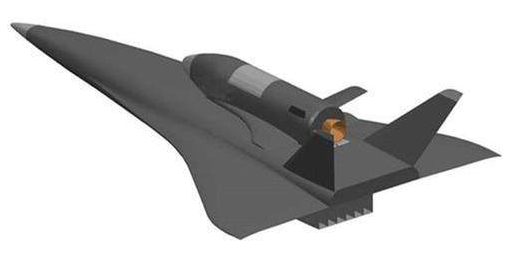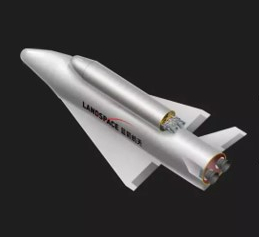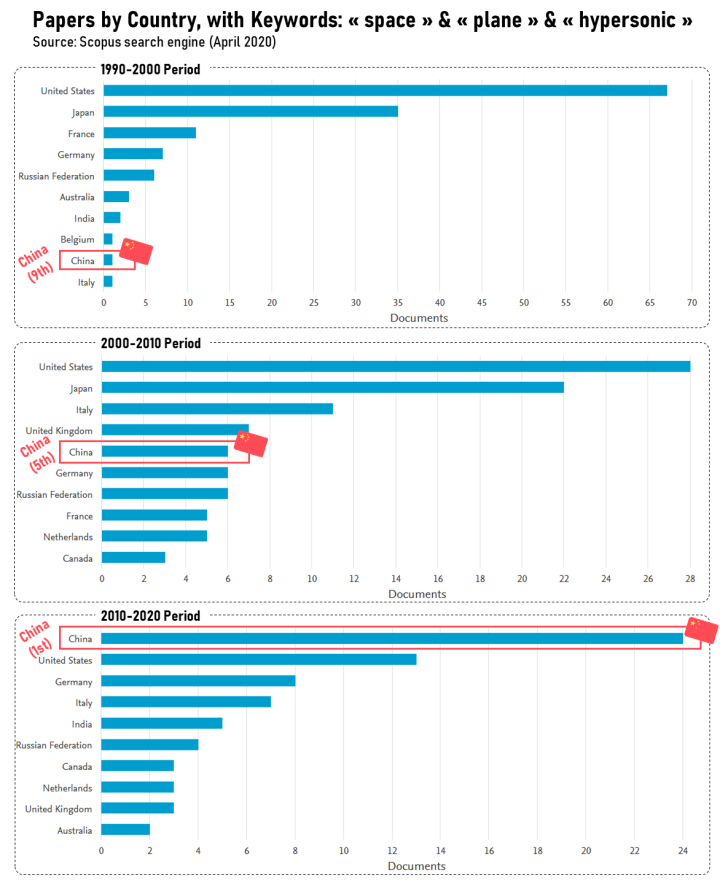This article is the second and final part of a two-piece blog post by China Aerospace Blog on Chinese spaceplanes. The first part discussed China’s historical approach to reusability, and more specifically to spaceplanes. This part extends the discussion by reviewing current Chinese spaceplane projects, and provides a map.
Mapping Current Chinese Spaceplane Projects
Below is a map of all Chinese spaceplane projects, including abandoned projects and ones currently under development. Both private and state-owned company initiatives were examined, as well as unconfirmed secret programs. For the latter category, I have chosen to put only commonly mentioned projects, as a lot of related information is based on speculation. Spaceplane programs that are currently being carried out are discussed in the rest of the article below.
 Fig. 1 – Map of China Spaceplane Projects, Past and Present and Future*
Fig. 1 – Map of China Spaceplane Projects, Past and Present and Future*
(full size version available here)
*If any spaceplace project was forgotten, feel free to let me know in the comments or by PM, I will gladly update the map.
Satellite Launch
Reusability is one of the top developing trends in the Chinese space industry. For satellite launch in particular, there is a consensus on the necessity to make launch vehicles reusable to bring costs down. The favoured technical solution by the Chinese to reach this, however, has overwhelmingly been SpaceX-style retropropulsive landing, with at least a dozen projects of vertical take-off vertical landing (VTVL) rockets with recoverable first stages. Chinese NewSpace startups, notably, have been instrumental in promoting the idea, supported by deep-pocketed investors and encouraged by mushrooming constellation projects. In this regard, little attention has been given to spaceplanes, although two projects draw our attention:
- Tengyun (腾云), one of the five “Yun” commercial aerospace projects launched by CASIC in 2016. CASIC, short for China Aerospace Science and Industry Corporation, is one of the two (huge) Chinese aerospace conglomerates, and is also China’s main missile manufacturer. While the 4 other “Yun” projects*, two broadband and narrowband constellations, a solar-powered HALE UAV, and a stratospheric airship seem plausible, the Tengyun project seems technically very ambitious.
Tengyun is an fully reusable aerospaceplane, based on a two-stage-to-orbit (TSTO) and Horizontal Take-off Horizontal Landing (HTHL) design. Its propulsion systems would potentially be world class: a turbine-based combined cycle (TBCC) for the 1st stage, and more classic rocket for the second stage. Both stages are reusable and would return to the ground by performing horizontal landing. The development of the new technologies such as the TBCC propulsion system is scheduled for completion in 2025, and the first flight in 2030.
*Hongyun, Xingyun, Feiyun, Kuaiyun
 Fig. 2 – artistic rendering of Tengyun space plane (credits unknown)
Fig. 2 – artistic rendering of Tengyun space plane (credits unknown)
- Tianxing-1, 2 and 3 (天行), are the spaceplanes currently under development by Chinese start-up Space Transportation Co., founded in 2018, and which has seemingly specialized in making low-cost reusable horizontal landing launch vehicles. While very little information has been disclosed on the Tianxing family, the company’s corporate website mentions that Tianxing 1 and 2 would be suborbital vehicles dedicated to hypersonic science experiments, while Tianxing 3 will be a small orbital vehicle capable of delivering a payload to low earth orbit. There is also talk of Tianxing-4, a suborbital spaceplane dedicated to space tourism, although it is not mentioned on Space Transportation’s official website at the time of writing.
Test flights have been conducted for Tianxing-1 in 2019 (see a previous article on the matter here), and cooperation has also been undergoing with Xiamen University [1], an institution known for its works on hypersonics.
 Fig. 3 – a rendering of the Tianxing family in 2019 [2], likely to be purely speculative at this point other than for Tianxing-1
Fig. 3 – a rendering of the Tianxing family in 2019 [2], likely to be purely speculative at this point other than for Tianxing-1
 Fig. 4 – Jiageng-1, based on the Tianxing-1 vehicle, in cooperation with the University of Xiamen (Credits: University of Xiamen)
Fig. 4 – Jiageng-1, based on the Tianxing-1 vehicle, in cooperation with the University of Xiamen (Credits: University of Xiamen)
Crewed Spaceflight
For crewed spaceflight, as discussed in the previous blog post, spaceplanes have been rather unpopular: the more conservative capsule design has prevailed in the past (Shenzhou), and are also favoured in the present. Chinas’s New Generation Manned Spacecraft (which has yet to be given an official name), will be China’s main workhorse for future crewed LEO and lunar missions. The configuration is a capsule much larger than Shenzhou, with the crew module being recoverable and reusable . The first flight test took place in early May 2020.
The private sector has nonetheless given birth to some crewed spaceplane projects, all at a very early stage of development. It is hard to say which of these spacecraft will actually see the day.
- Landspace Qinglong (青龙): In a 2018 keynote, Landspace, presented a space vehicle called Qinglong (青龙), which according to the speaker, can take 10 passengers to low earth orbit. No further information is known (to my knowledge), and Qinglong does not appear on Landspace’s corporate website at the time of writing. Landspace is a private company and widely considered as one of the most promising Chinese NewSpace launch companies.
 Fig. 5 – Qinglong spaceplane shown during Landspace’s 2018 keynote
Fig. 5 – Qinglong spaceplane shown during Landspace’s 2018 keynote
- iSpace Suborbital Concept Vehicle (亚轨道概念飞行器): just like other Chinese NewSpace launch startups, iSpace is focused on making reusable VTVL small and medium launch vehicles. But they also have an interesting spaceplane project that will be dedicated to space tourism and even point to point transportation of passengers (“Shanghai to Los Angeles in 39 minutes”). While this vehicle is only a concept at this stage, the CEO gave a few insights on the configuration: it would be launched vertically on top of a reusable booster (presumably iSpace’s Hyperbola series?), the latter performing vertical landing. The images shared by iSpace also show the spaceplane powered by a single rocket engine. [3]
 Fig. 6 – iSpace’s Suborbital Concept Vehicle (credits: iSpace)
Fig. 6 – iSpace’s Suborbital Concept Vehicle (credits: iSpace)
- Tianxing-4: as mentioned previously, Space Transportation has unconfirmed plans for a spaceplane dedicated to tourism. No further information is known at the time of writing.
 Fig. 7 – illustration of Tianxing-4 (credits: Space Transportation?)
Fig. 7 – illustration of Tianxing-4 (credits: Space Transportation?)
Academic interest
While not “a spaceplane project” per se, Chinese academic interest on topics related to spaceplanes have been strong. Keyword combinaisons such as “space” & “plane” & hypersonic”, or “space” & “plane” & “scramjet” in academic paper search engines were realized*. Strong Chinese representativeness was found, comparable to research from other aerospace countries. A growing importance of Chinese research on these topics are impressive (especially for “space” & “plane” & hypersonic”, see Fig. 8).
*The Scopus search engine was used for this blog post
 Fig. 8 – Search for papers with keywords “Space”, “Plane” and “Hypersonic” (Scopus search engine, April 2020)
Fig. 8 – Search for papers with keywords “Space”, “Plane” and “Hypersonic” (Scopus search engine, April 2020)
It should be noted that this method is somewhat crude: a large part of winged hypersonic flight research is likely destined to military applications, which don’t follow the same trajectory or have the same requirements as the aformentioned spaceplanes. Furthermore, an academic search engine likely just shows the tip of the iceberg, as a large part of this kind of research remains confidential.
The tendencies remain valid nonetheless: strong and growing representativeness of China research on topics closely linked to spaceplane design. It also puts into the spotlight Chinese universities leading hypersonic research, such as CARDC, NUDT, Beihang University, Northwestern Polytechnical University, NUAA, and the Harbin Institute of Technology*.
*CARDC: China Aerodynamic Research & Development Center; NUDT: National University of Defense Technology; NUAA: Nanjing University of Aeronautics and Astronautics;
As a concluding remark, I would add that spaceplanes are an old idea : concepts have flourished since the 1950s, especially in the US, with most of them being cancelled due to technical difficulties or for budgetary reasons. It will be interesting to see in the next 10 years if China is able to overcome the many obstacles and succeed where many have failed in the past.
References
[1] 厦门大学成功发射 “嘉庚一号”带翼回收火箭, Xinhua News, 24/04/2019
[2] 凌空天行!中国某型高超声速飞行器首飞成功, 小火煎,23/04/2019
[3] 星际荣耀执行总裁蔡晶琦:中国商业航天发展迅速,未来可期, 阿琦谈科技, 09/12/2019


I wonder if any of these or other concepts may have any similarity to Dawn Aerospace’s spaceplane just recently unveiled in NZ.
LikeLiked by 1 person
Thanks for the article (both parts are interesting)! As I’m reading Dennis Jenkins’ excellent Space Shuttle book, which describes the road to the Shuttle with all the myriad projects and different configurations and visions, it is interesting to read about how the Chinese are tackling the problem of reusability. Good work, I’ll certainly be checking your blog again! (Maybe you’re interested that I was pointed to your blog via a BBC article on spaceplanes: https://www.bbc.com/future/article/20210121-spaceplanes-the-return-of-the-reuseable-spacecraft.)
LikeLiked by 1 person
Thanks for your kind comment Tuomas! Glad you enjoy the content.
LikeLike